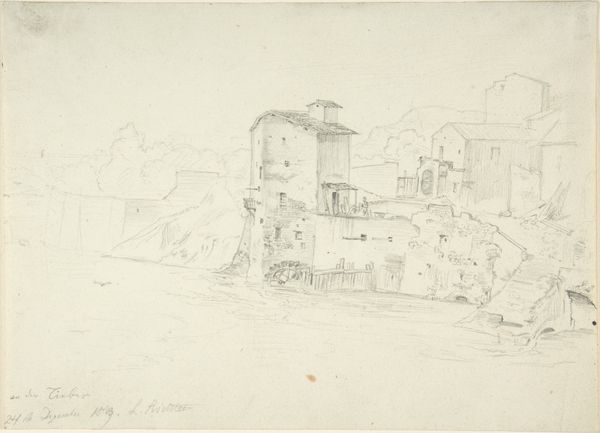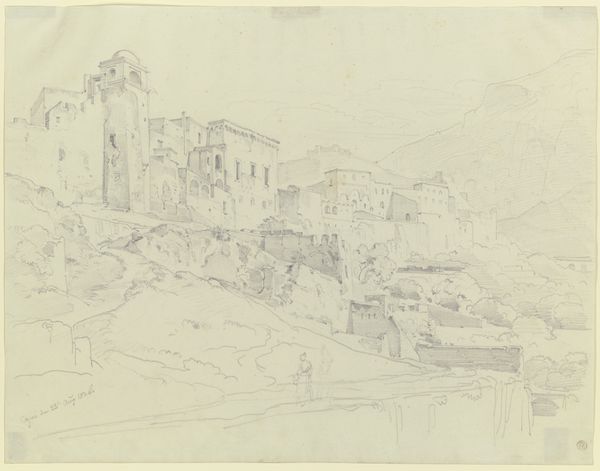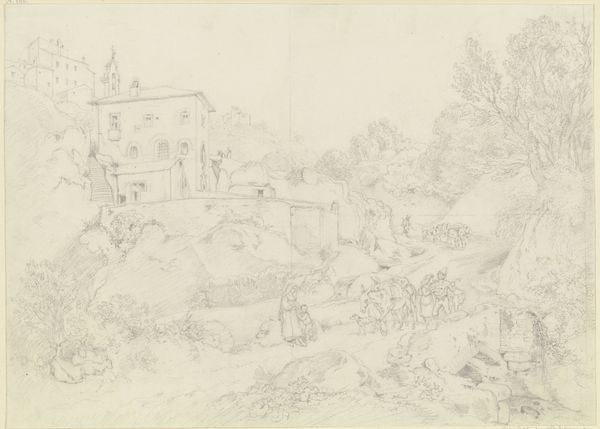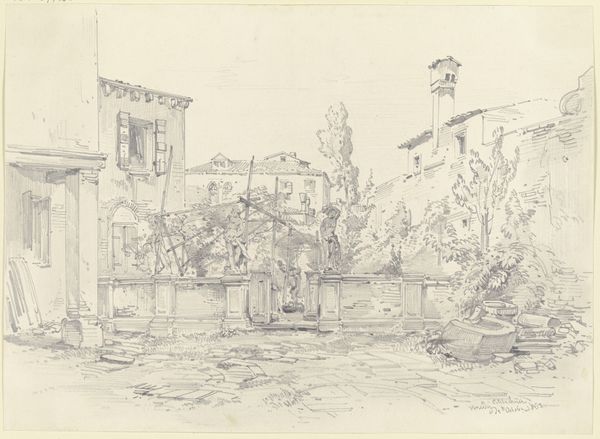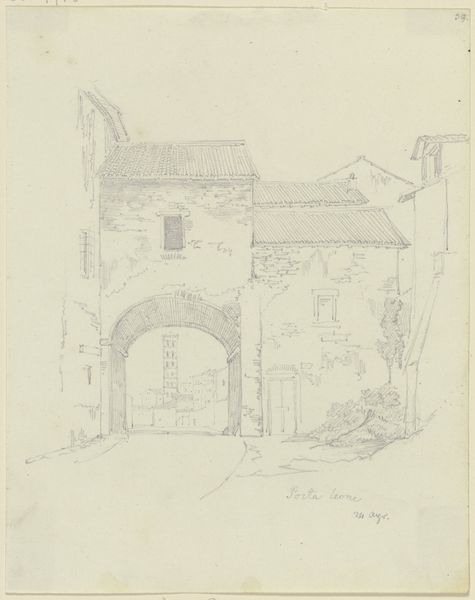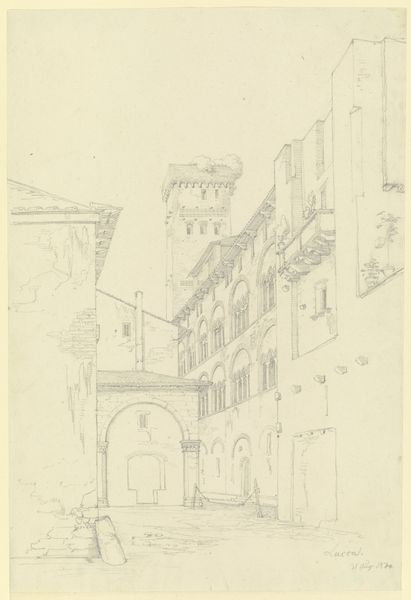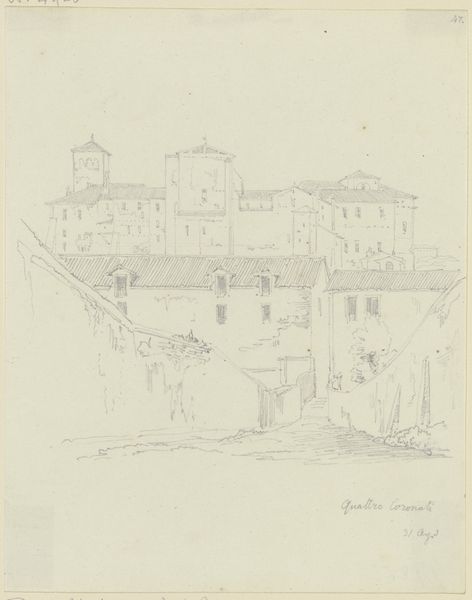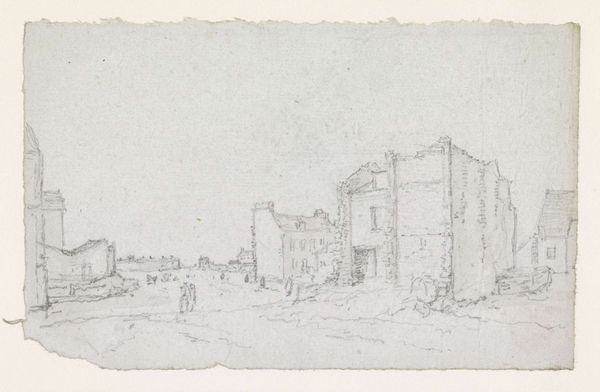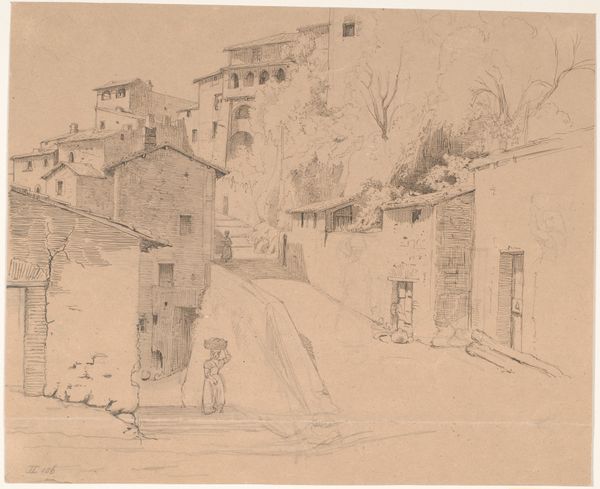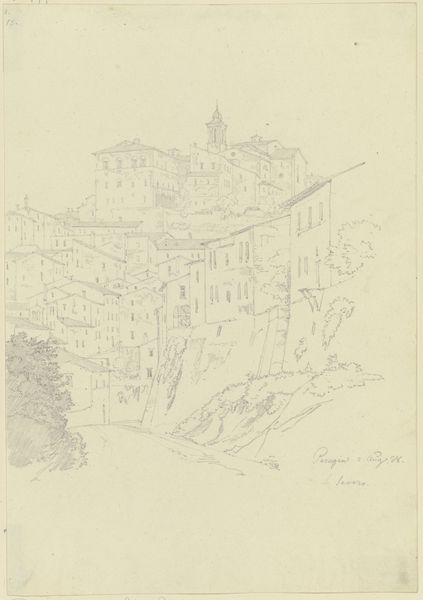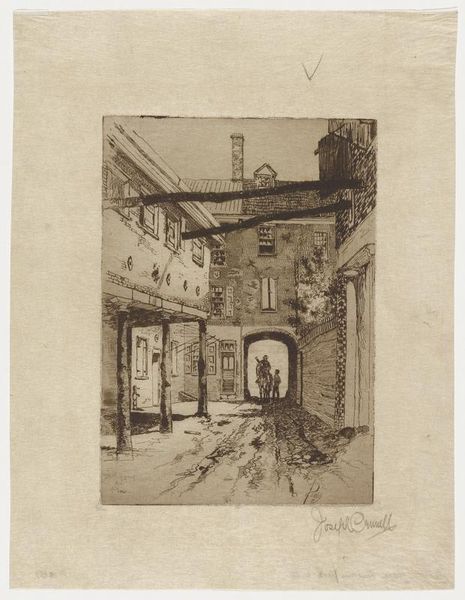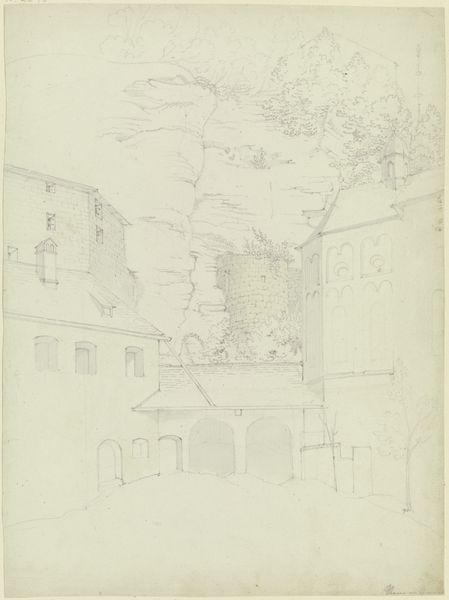
Copyright: Public Domain
Editor: This is Ernst Fries’ “Rom, Häusergruppe an der Aurelianischen Mauer,” drawn in 1826. It's a pencil drawing, quite delicate in its lines. I’m struck by the way the buildings seem to almost grow out of the landscape, like a natural extension. What catches your eye when you look at it? Curator: It’s that very merging of nature and architecture that captivates me too! Fries seems to suggest that the built environment and natural world are intertwined, coexisting and evolving together, don't you think? It’s Rome, after all—a city built on layers of history, where ruins become foundations. Perhaps he saw a reflection of that resilience in these buildings nestled against the ancient wall? Editor: I hadn't thought about the idea of "resilience," but I see that! The crumbling walls do seem to suggest persistence over time. Curator: Exactly! And the muted palette of the pencil drawing, doesn’t that create a sense of timelessness, as if we are looking at a memory, a dream? It is the essence of Romanticism after all—a nostalgic glance at the past, tinged with longing. Imagine Fries, sketching this scene nearly two centuries ago; he may also be struck by its antiquity. What do you think that he want to capture through it? Editor: Maybe he wanted to document a piece of history that was slowly disappearing, before it was entirely lost? This makes me think differently about sketches as a means of preserving the past. Curator: Beautifully put. Each stroke of his pencil, an attempt to freeze a fleeting moment. The Romantics certainly valued capturing such scenes that might be vanishing! Thank you for giving me new perspectives on seeing and interpreting it! Editor: Thanks, that was truly insightful. I'm starting to appreciate the quiet power in these seemingly simple sketches.
Comments
No comments
Be the first to comment and join the conversation on the ultimate creative platform.
